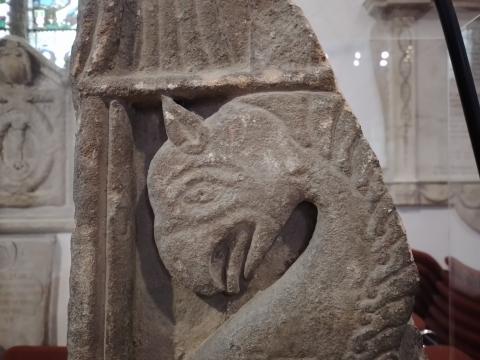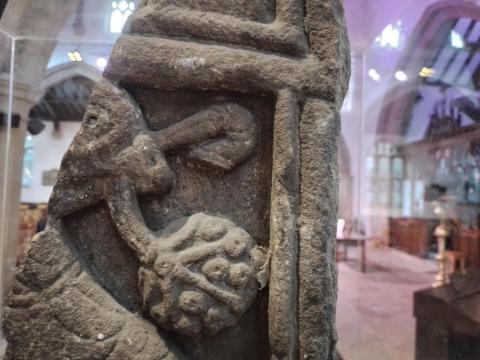Dragon Cross

In Otley’s parish church, West Yorkshire, are displayed a number of Anglo-Saxon crosses. Typically broken, with pieces missing, the surviving carvings are still clear and well defined.
There is some dragon imagery in the Bible, especially in the final book, Revelation. The dragon represents Satan (‘that great serpent’) who opposes God and His people and all they stand for. Those Saxon cross builders might have understood that ancient war between good and evil, God and the dragon, which is why they show the serpent coiling and slithering about the cross.

The other explanation, which few secular interpreters could countenance, is that the carvers saw these great lizards in real life. The Authorised Version of the Bible unashamedly speaks of dragons; it was only when we were informed that dragons or dinosaurs lived many millions of years ago and that no human could ever possibly have seen one, were we required to dismiss such carvings as the fruit of overactive imaginations or theological poetry. I suspect the tenth-century English indeed witnessed large reptiles on this island, at the prospect of which their descendants would scoff. While the metaphorical dragon, the devil, bespeaks great evil, the great reptiles whose bones we still find bespeak God's creative genius. Our God is both creator of the great lizards, as well as eventual destroyer of the great dragon.

- Log in to post comments


 Sunday Worship 10.45am & 6.00pm
Sunday Worship 10.45am & 6.00pm